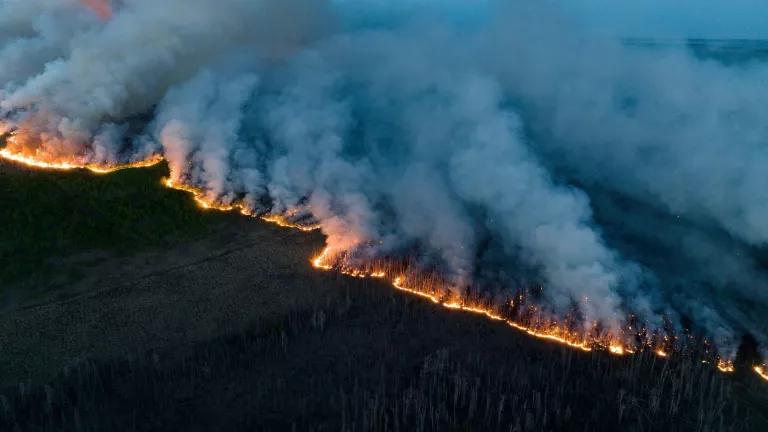Is National Heat Awareness Day 2019 Coming Too Late?

It’s time to move National Heat Awareness Day—traditionally the last Friday of May—to earlier in the year.
Why? The pollution driving climate change is also driving up spring temperatures and hastening the transition to summer. For example, summer in 25 U.S. cities including Cleveland, Philadelphia, and Miami now starts an average of 11 days earlier than it did in 1948. This means unhealthy heat will be settling on those residents sooner, and longer than it used to.
Already this year, unseasonably high temperatures have sickened hundreds, and possibly thousands, of people across America—even though summer hasn’t officially started. In Maryland, more than 300 people visited emergency rooms for heat-related illnesses from May 21 to May 27 alone. In North Carolina, heat sent more than 200 people to emergency rooms earlier in the month, and emergency responders reported more heat-related calls than normal in just the last few days. And across South Carolina, Florida, Arizona, New Jersey, and Minnesota, 19 children have died since April from heat stroke while in a vehicle.
Early-season heat waves can be rougher on human health than late-season heat waves, particularly for people living in cooler climates. That’s because as summer progresses, we gradually—but temporarily—acclimate to higher temperatures. A similar phenomenon happens when people are new to strenuous activity while in the heat. For instance, in a study of U.S. Army recruits, more than half of about 1,200 heat-related illnesses reported during basic combat training happened in the first three weeks. (To be clear, however, heat-related deaths and illnesses are possible any time of the year and in even well-acclimated people.)

National Heat Awareness Day is an effort by the Occupational Health and Safety Administration and the National Weather Service to alert workers, employers, and the public at large to the health dangers of heat and to reduce illnesses and deaths as a result.
The steady march of climate change demands a fresh approach to summer safety campaigns like this one. Americans largely underestimate the health risks of extreme heat, even though it’s the deadliest form of weather in the country. Residents of the northern U.S., who aren’t as accustomed to heat, are less likely to perceive health risks than their southern counterparts.
As federal agencies work to protect people from weather extremes, they’ll need to tailor their approaches for regional audiences—and be prepared to refine and improve their communication efforts to match our climate-changed reality. And they’ll need to do so earlier in the year from now on.




